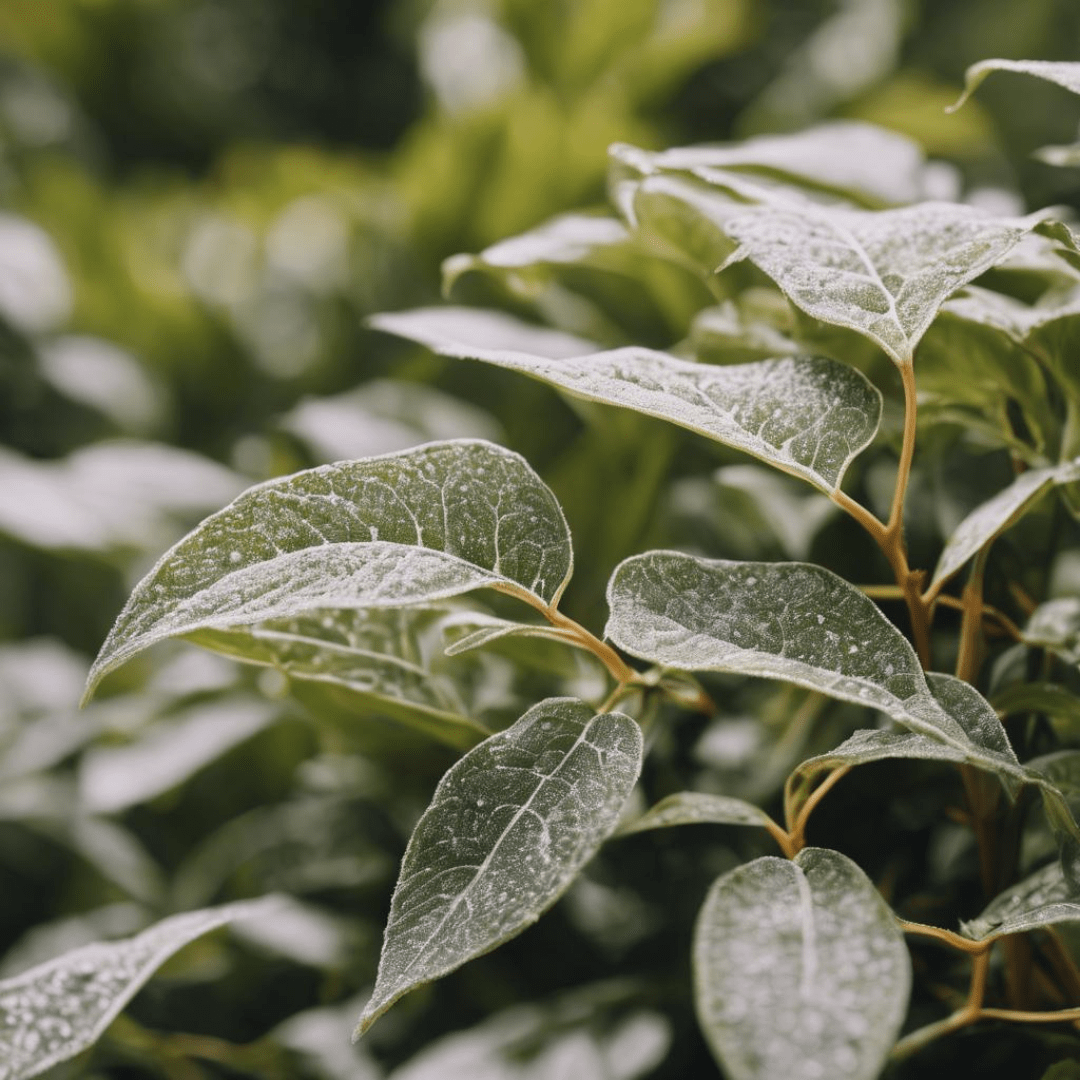Learn how to effectively combat powdery mildew in your garden using natural, practical methods that really work. From organic sprays to better airflow and plant care, these simple tips will help you protect your vegetables, fruit trees, and flowers from this common fungal problem. Perfect for homesteaders, off-grid gardeners, and anyone who wants a healthy, thriving garden without harsh chemicals.
Powdery mildew is one of those garden challenges I’ve come to know well over the years. I remember the first time I saw that white, powdery coating spreading across my squash leaves—it felt so discouraging. But after some trial and error, I’ve learned that this problem is completely manageable with the right approach. With a few natural remedies, a little prevention, and some extra care, you can keep your plants strong, healthy, and producing all season long. Let me share what’s worked best for me on my homestead.
This is a pinnable post. Tap or hover over any image in this post to pin to your Pinterest Boards.
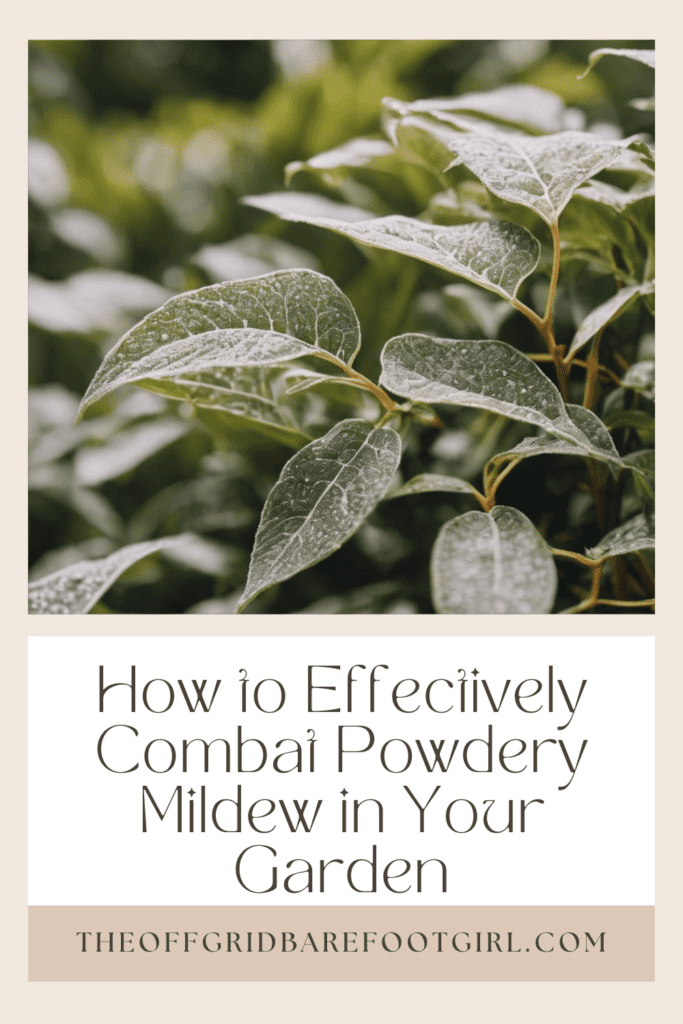
Understanding Powdery Mildew: Causes and Characteristics
Powdery mildew may sound like a harmless sprinkle of fairy dust, but it’s actually a pesky fungal disease that can wreak havoc on your garden. This fluffy menace is caused by various species of fungi, which thrive in specific environmental conditions.
What is Powdery Mildew?
Powdery mildew isn’t your typical garden disease. It presents itself as a white or gray powdery coating on the leaves, stems, and even fruits of plants.
Environmental Factors that Contribute to Powdery Mildew
So, what makes powdery mildew feel right at home in your garden? It loves warm temperatures (around 60 to 80°F), low humidity, and shady areas with limited air circulation. Basically, it’s the perfect climate for a fungal summer vacation. Here are some more environmental factors:
- Overhead Watering:
- Watering plants from overhead, especially in the evening, can create a humid environment on plant surfaces. Moist foliage provides an ideal setting for powdery mildew development.
- Plant Density:
- Planting crops too closely together can limit air circulation, creating a more favorable environment for powdery mildew development. Proper spacing allows air to flow through the plants, reducing humidity around them.
- Host Plant Susceptibility:
- Some plants are more susceptible to powdery mildew than others. Certain cultivars and species may be genetically predisposed to the disease. Choose resistant varieties when possible.
- Nutrient Imbalances:
- Plants with nutrient deficiencies, particularly in potassium, may be more susceptible to powdery mildew. Maintaining proper soil fertility can help strengthen plant defenses.
- Stress Conditions:
- Stressed plants are more susceptible to diseases, including powdery mildew. Environmental stresses such as drought, inadequate watering, or poor soil conditions can weaken plants and make them more vulnerable.
- Spore Presence:
- The presence of powdery mildew spores in the environment is a key factor. Once established, the disease can spread rapidly through windborne spores, making preventive measures crucial.
- Lack of Sunlight:
- Powdery mildew thrives in shady conditions. Lack of sunlight on plant surfaces can contribute to the development of the disease. Prune plants to improve sunlight penetration and air circulation.
- Resistant Cultivars:
- Some plants have cultivars that are more resistant to powdery mildew. Choosing resistant varieties can be an effective strategy in preventing the disease.
Common Plants Affected by Powdery Mildew
Powdery mildew can affect a wide range of plants, both ornamental and edible. Keep in mind that while certain plants may be more susceptible to powdery mildew, environmental conditions also play a significant role in their development. Providing proper spacing between plants, ensuring good air circulation, and adopting other preventive measures can help minimize the risk of powdery mildew on these and other susceptible plants. Additionally, choosing resistant cultivars when available is a proactive approach to managing powdery mildew in your garden. Here is a list of common plants that are often susceptible to powdery mildew:
Ornamental Plants:
- Rose.
- Phlox.
- Zinnia.
- Bee Balm.
- Lilac.
- Crape Myrtle.
- Hollyhock.
- Peony.
- Delphinium.
- Snapdragon.
Edible Plants:
- Cucumbers.
- Squash.
- Pumpkins.
- Melons.
- Tomatoes.
- Grapes.
- Apples.
- Peppers.
- Beans.
Identifying Powdery Mildew in Your Garden
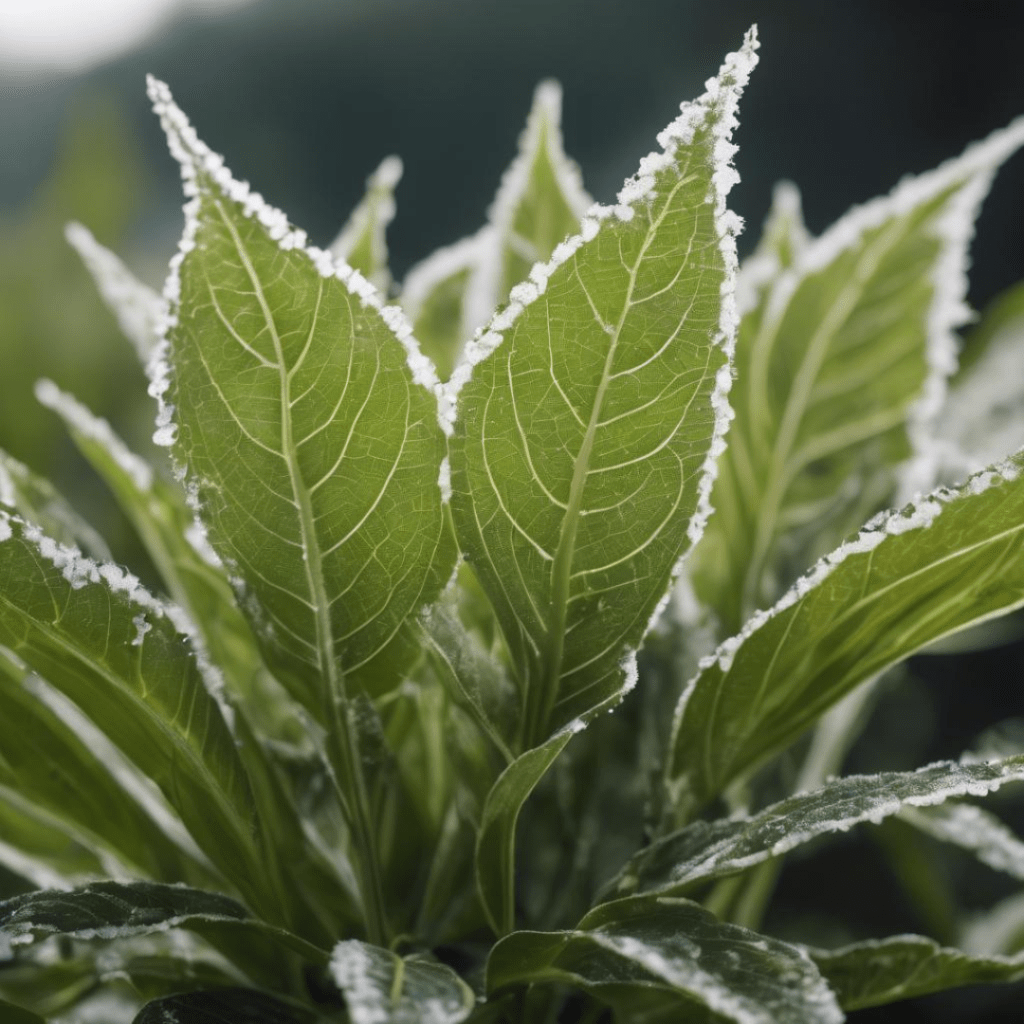
Recognizing powdery mildew is crucial for taking action before it spreads like gossip at a high school reunion. Here’s how to spot this unwelcome guest in your garden:
- White Powdery Substance:
- The most obvious sign of powdery mildew is the presence of a white, powdery substance on the surfaces of leaves, stems, and sometimes flowers. This powdery substance often resembles flour or talcum powder.
- Fuzzy or Puffy Appearance:
- Affected plant parts may appear fuzzy or have a puffy texture due to the accumulation of powdery mildew spores.
- Leaf Distortion:
- Powdery mildew can cause distortion, curling, or cupping of leaves. The affected leaves may not develop normally, and their growth may be stunted.
- Yellowing of Leaves:
- Leaves infected with powdery mildew may start to yellow, particularly in the areas surrounding the powdery growth. This yellowing can progress as the disease advances.
- Leaf Necrosis:
- In severe cases, powdery mildew can lead to the death of affected plant tissues, resulting in necrotic (dead) areas on leaves, stems, or other plant parts.
- Stunted Growth:
- Infected plants may exhibit stunted growth, reduced vigor, and diminished overall health. This is often a consequence of the plant’s reduced ability to photosynthesize due to the presence of the fungus.
- White or Gray Spots:
- Early signs of powdery mildew may manifest as small, white, or gray spots on the upper or lower surfaces of leaves. These spots can coalesce into larger patches over time.
- Affected Plant Parts:
- Powdery mildew can affect various parts of a plant, including leaves, stems, buds, flowers, and even fruit. Check multiple parts of the plant for symptoms.
- Distinctive Odor:
- Some plants infected with powdery mildew may emit a distinctive, musty odor. This is particularly noticeable when inspecting affected plant parts.
- Webbing on Leaves:
- In some cases, especially with spider mites that may be associated with powdery mildew, you might observe fine webbing on the leaves of the affected plants.
- Seasonal Occurrence:
- Powdery mildew is more common in warm, dry conditions. If you notice the symptoms during periods of warm weather with low humidity, it may indicate powdery mildew.
Differentiating Powdery Mildew from Other Plant Diseases
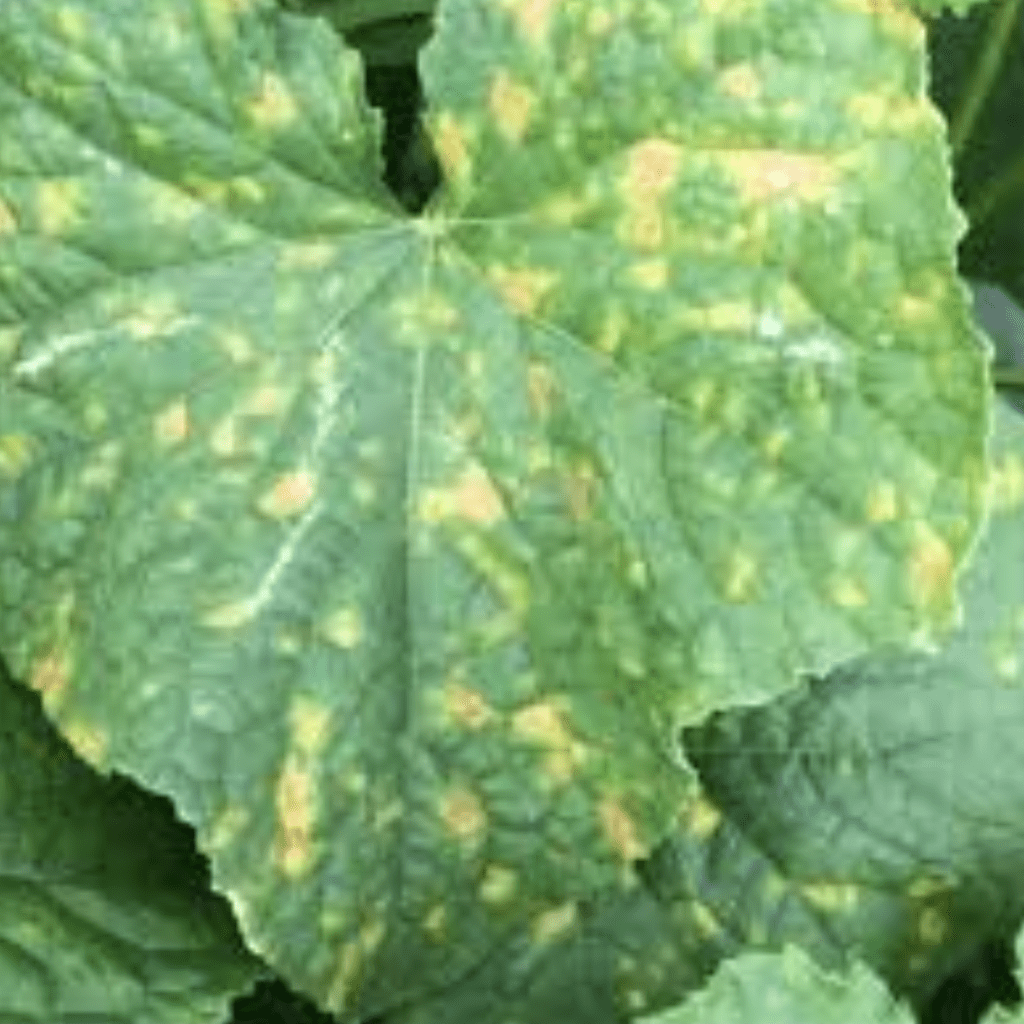
Not all plant diseases rock the powdery look, so it’s important to rule out imposters. Unlike other fungal diseases that usually start on the bottom of leaves, powdery mildew can appear on both sides. Additionally, its distinct powdery appearance sets it apart from other leaf diseases like downy mildew, which is a more velvety, yellowy look.
Monitoring Techniques for Early Detection
To catch powdery mildew in its tracks, practice regular garden surveillance. Regularly inspect your plants for any signs of white powder, curled leaves, or discoloration. It’s like being your plant’s personal detective, always on the lookout for fungal suspects. Here are some effective monitoring techniques for early detection:
- Visual Inspection:
- Regularly inspect plants for any signs of abnormalities, such as discoloration, wilting, distorted growth, or the presence of pests.
- Use a Magnifying Glass:
- A magnifying glass can help you inspect plants more closely, making it easier to identify small pests, eggs, or early signs of diseases that may not be visible to the naked eye.
- Check Under Leaves:
- Many pests and diseases, including aphids and powdery mildew, often start on the undersides of leaves.
- Install Yellow Sticky Traps:
- Yellow sticky traps attract and capture flying insects. By placing these traps strategically in your garden, you can monitor insect populations and identify potential pest problems.
- Set Up Pheromone Traps:
- Pheromone traps are effective for monitoring specific pests, such as certain types of moths.
- Inspect Soil Surface:
- Examine the soil surface for signs of pests, fungal growth, or unusual patterns. Some pests, like cutworms, may hide in the soil during the day and emerge at night to feed on plants.
- Record Observations:
- Keep a gardening journal or use a smartphone app to record your observations. Note any changes in plant appearance, the presence of pests, weather conditions, and any treatments applied.
- Use Digital Tools:
- Smartphone apps and online resources can help identify plant diseases, pests, and nutritional deficiencies. Take pictures of any unusual symptoms and use these tools to seek assistance in diagnosis.
- Monitor Plant Growth:
- Keep an eye on the overall growth and development of your plants. Stunted growth, yellowing leaves, or wilting can be indicators of various issues, including nutrient deficiencies or pest infestations.
- Utilize Companion Planting:
- Companion planting involves strategically placing plants that benefit each other or repel pests. Monitor the health and interactions of companion plants to identify potential issues.
Preventing Powdery Mildew: Best Practices for Garden Maintenance
Prevention is key when dealing with powdery mildew. By keeping your garden in tip-top shape, you’ll make it less inviting for this unwanted party crasher.
Proper Plant Spacing and Air Circulation
Give your plants some breathing room, both figuratively and literally. Proper spacing allows for better air circulation, reducing the chances of powdery mildew taking hold. Just like you need your personal space, so do your plants!
Regular Pruning and Plant Maintenance
Show your plants some love by regularly pruning damaged or crowded branches. This not only improves airflow, but also removes potential breeding grounds for powdery mildew spores.
Appropriate Watering and Irrigation Techniques
When it comes to watering, powdery mildew prefers to be kept out of the loop. Avoid overhead watering, as it can create a moist environment that encourages fungal growth. Instead, aim for watering at the base of the plants to keep the leaves dry. Hey, even plants don’t like getting caught in the rain!
Natural Remedies for Managing Powdery Mildew
If powdery mildew gatecrashes your garden party, don’t worry. There are natural remedies that can help you regain control without resorting to harsh chemicals.
Homemade Organic Sprays and Solutions
Why not whip up some homemade magic to combat powdery mildew? Mixtures like milk spray (yes, milk!) or baking soda solutions can help suppress the fungal growth. It’s like a DIY potion for gardening adventures!
Beneficial Insects and Biological Controls
Call in the cavalry! Encouraging beneficial insects like ladybugs and lacewings can help control powdery mildew naturally. These tiny heroes devour the pests that spread the disease, like the green aphid gang. It’s like having your own miniature garden Avengers! Check out my other post on how to release ladybugs in your garden!
How to Release Ladybugs In Your Garden for Organic Pest Control
Cultural Practices to Reduce Powdery Mildew Spread
In addition to natural remedies, cultural practices play a crucial role in managing powdery mildew. Removing infected leaves, quarantining affected plants, and practicing crop rotation can help minimize its spread. Think of it as a powdery mildew exclusion strategy – keep it contained and show it the exit.
With these tips in your gardening toolbox, you’ll be ready to combat powdery mildew and keep your garden looking fabulous. So, put on your gardening gloves, grab your spray bottle, and show that fluffy fungal snowstorm who’s boss!
Chemical Treatments for Powdery Mildew Control
Types of Fungicides Effective Against Powdery Mildew
When it comes to battling powdery mildew, sometimes you need to bring in the big guns – or in this case, fungicides. Fungicides are chemical treatments specifically designed to target and eliminate fungal infections like powdery mildew.
There are various types of fungicides available that have been proven effective against powdery mildew. Some common ones include sulfur-based fungicides, neem oil, and potassium bicarbonate. These fungicides work by either preventing the growth of the fungus or by killing the existing spores.
Proper Application and Safety Measures
Before you go all Hulk mode with your fungicide, it’s important to understand the proper application methods. Always read the instructions on the fungicide packaging and follow them carefully. You don’t want to accidentally create a mutant plant by overdoing it.
Additionally, safety should be your utmost priority. Wear protective clothing, gloves, and a mask when handling fungicides to avoid any harm to yourself. And remember, fungicides are meant to target the powdery mildew, not your enemies or annoying neighbors.
Integration of Chemical Treatments with Other Methods
While chemical treatments can be effective, they shouldn’t be your only line of defense against powdery mildew. You’re not running a one-man show here, so why not bring in some reinforcements?
Integrating chemical treatments with other methods can boost your chances of success. Combine them with cultural practices like proper sanitation, careful watering, and improving air circulation in your garden.
Timing and Frequency of Powdery Mildew Management
Seasonal Considerations for Powdery Mildew Prevention
Timing is crucial when it comes to managing powdery mildew. Like a ninja waiting for the perfect moment to strike, you need to be aware of the conditions that favor its growth. Powdery mildew thrives in warm and humid environments, so be extra vigilant during these times.
Regular Inspections and Treatment Schedules
Regular inspections of your plants can save you from a full-blown powdery mildew invasion. Keep an eye out for any signs of the fungus – those sneaky white powdery patches on the leaves are a dead giveaway.
Set up a treatment schedule based on the severity of the infection and the recommendations of the fungicide you’re using. Consistency is key, my friend. Don’t skip treatments or your plants might give you the silent treatment in return.
Adjustments Based on Weather and Plant Growth
Just like how your plans change when it starts pouring rain on your beach day, you need to adapt your powdery mildew management strategy based on weather conditions and plant growth.
If there’s heavy rainfall or prolonged periods of high humidity, you may need to increase the frequency of treatments. On the other hand, when the weather becomes drier and cooler, you can dial it back a bit. Pay attention to your plant’s needs and adjust accordingly. They’ll thank you for it (maybe not verbally, but definitely in their own leafy way).
Ensuring Long-Term Powdery Mildew Resistance in Your Garden
Selecting Resistant Plant Varieties
When it comes to powdery mildew, not all plants are created equal. Some plant varieties have natural resistance to the fungus, making your job a whole lot easier. So, when you’re planning your garden, do some research and choose plant varieties known for their powdery mildew resistance.
Crop Rotation and Soil Management
Just like humans need a change of scenery to keep things interesting, your plants can benefit from crop rotation. By rotating your crops every season, you help prevent the buildup of powdery mildew spores in the soil.
Additionally, maintaining healthy soil through proper nutrition and organic matter can strengthen your plants’ immune systems, making them less susceptible to powdery mildew and other diseases. So, feed your soil some love, and it’ll pay you back with thriving, powdery mildew-resistant plants.
Pruning and Removing Infected Plant Parts
Sometimes, you just have to take the tough love approach. If you spot powdery mildew on your plants, don’t be afraid to get out those pruning shears and remove the infected parts. Prune away any affected leaves, stems, or flowers to prevent the spread of the fungus.
Remember to sanitize your tools between each cut to avoid inadvertently spreading the spores – no sharing of powdery mildew allowed!
Conclusion
By incorporating these long-term strategies, you’ll be building a fortress of powdery mildew resistance in your garden. It’s time to show powdery mildew who’s boss and reclaim your garden as a disease-free paradise!
By implementing the strategies and preventive measures outlined in this article, you can effectively combat powdery mildew in your garden. Remember to regularly monitor your plants for early detection, maintain good garden hygiene, and choose the appropriate treatment methods based on your preferences and the severity of the infestation. With proper care and attention, you can enjoy a thriving garden free from the damaging effects of powdery mildew.
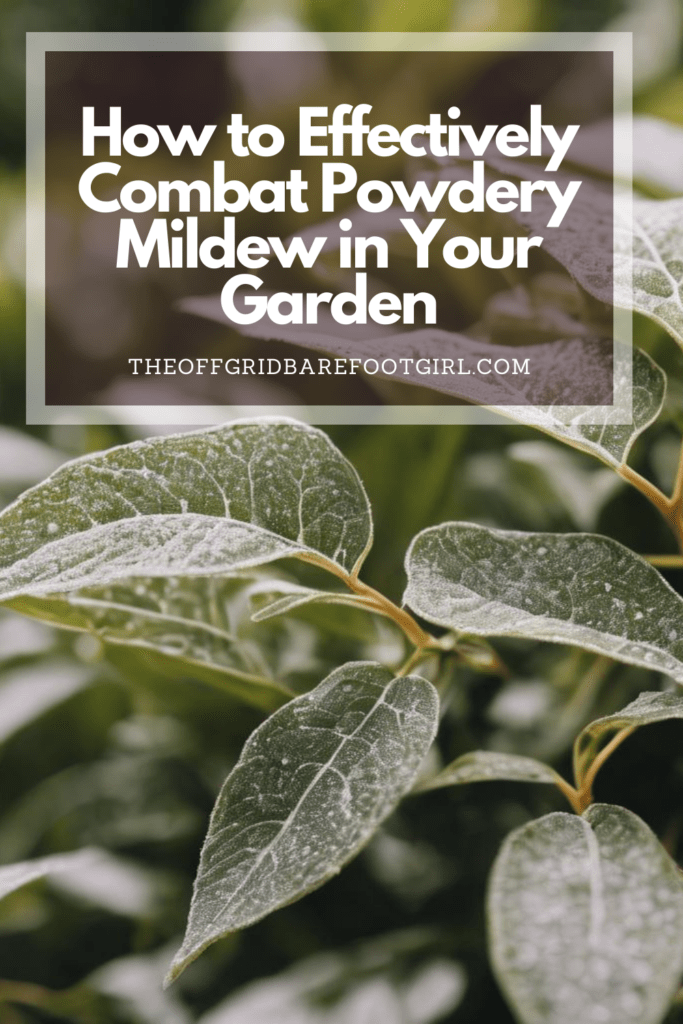
Frequently Asked Questions
1. Can powdery mildew be harmful to humans?
No, powdery mildew does not pose any direct harm to humans. However, it can cause discomfort for those with allergies or respiratory issues. It is recommended to avoid direct contact with infected plants and wear protective gear, such as gloves when handling them.
2. Can powdery mildew spread from plant to plant?
Yes, powdery mildew is highly contagious and can easily spread from plant to plant. It can be carried through air currents, insects, gardening tools, or even by contact with infected leaves. It is important to take prompt action and implement preventive measures to prevent further spread.
3. Are there certain plants that are more susceptible to powdery mildew?
Yes, certain plant species are more prone to powdery mildew than others. Commonly affected plants include roses, cucumbers, squash, zucchini, melons, grapes, and ornamental flowers. It is advisable to choose resistant plant varieties and practice proper spacing and ventilation to minimize the risk of powdery mildew.
4. Can I eat fruits or vegetables affected by powdery mildew?
In general, it is safe to consume fruits and vegetables that have been affected by powdery mildew. However, it is recommended to wash them thoroughly before consumption to remove any residues. It is best to harvest and use affected produce as soon as possible to prevent further deterioration.
Summary
I hope I have inspired you to use these methods and techniques to treat and prevent powdery mildew with these tips and products.
If you were encouraged by this post, I invite you to check out my FREE Printables Page for fun free printables, planners, and charts.
ENTER MY FREE Printables Page HERE
Here are some more of my gardening inspiration posts to check out!
The Best Tips for Organic Gardening
How to Release Ladybugs In Your Garden for Organic Pest Control
The Best Garden Snail Control Strategies
The Best Spring Vegetables to Grow in Your Garden
Seed Starter Mix: How To Make Your Organic Seed Starter Mix At Home
How to Grow a Productive Canning Garden
How to Plant and Grow a Salsa Garden
Easiest Heirloom Vegetable Seeds to Grow Now
How to Use the Hand Twist Claw Tiller: Tackling Tough Soil
Planning Your Garden: How to Plan a Vegetable Garden: Expert Green Thumb Tips!
Winterizing the Garden: How to Winterize Your Vegetable Garden: Step-by-Step Checklist
Mulching the Garden: How to Make Leaf Litter Mulch
Grow a Pumpkin Patch: How to Grow a Pumpkin Patch in Your Backyard
How to Win a Giant Pumpkin Contest
How to Grow a Fall Garden: 9 Best Fall Crops
Clever Ways to Incorporate Indoor Composting into Your Home
How to Start Composting for the Garden: A Step-by-Step Guide
The Ultimate Guide to Composting in Your Suburban Backyard
Why I Built A Survival Garden in My Backyard
How to Grow A Foodscape Garden From Scratch
16 Best Medicinal Herbs to Grow in Your Garden Now
Blessings,
The Off Grid Barefoot Girl

